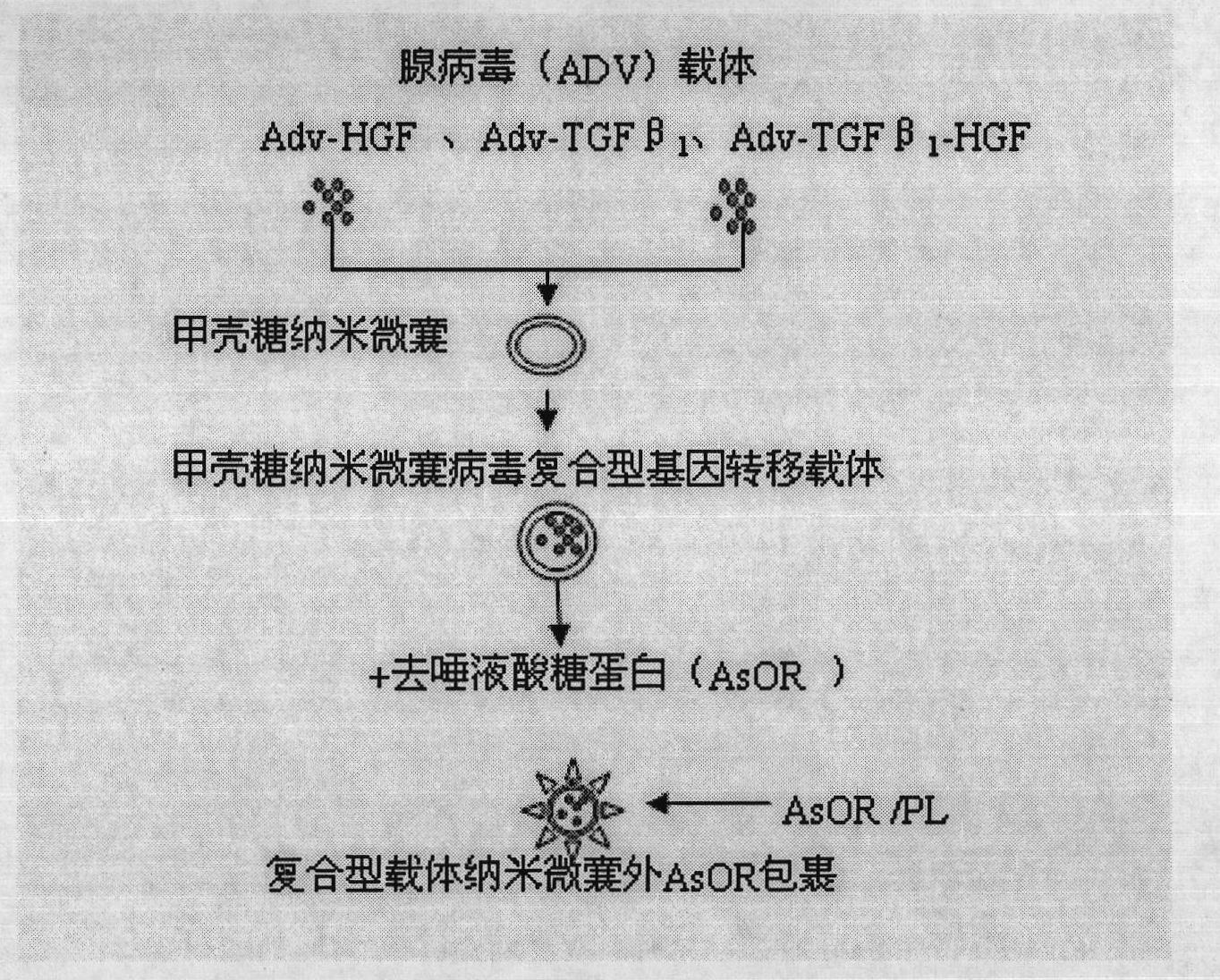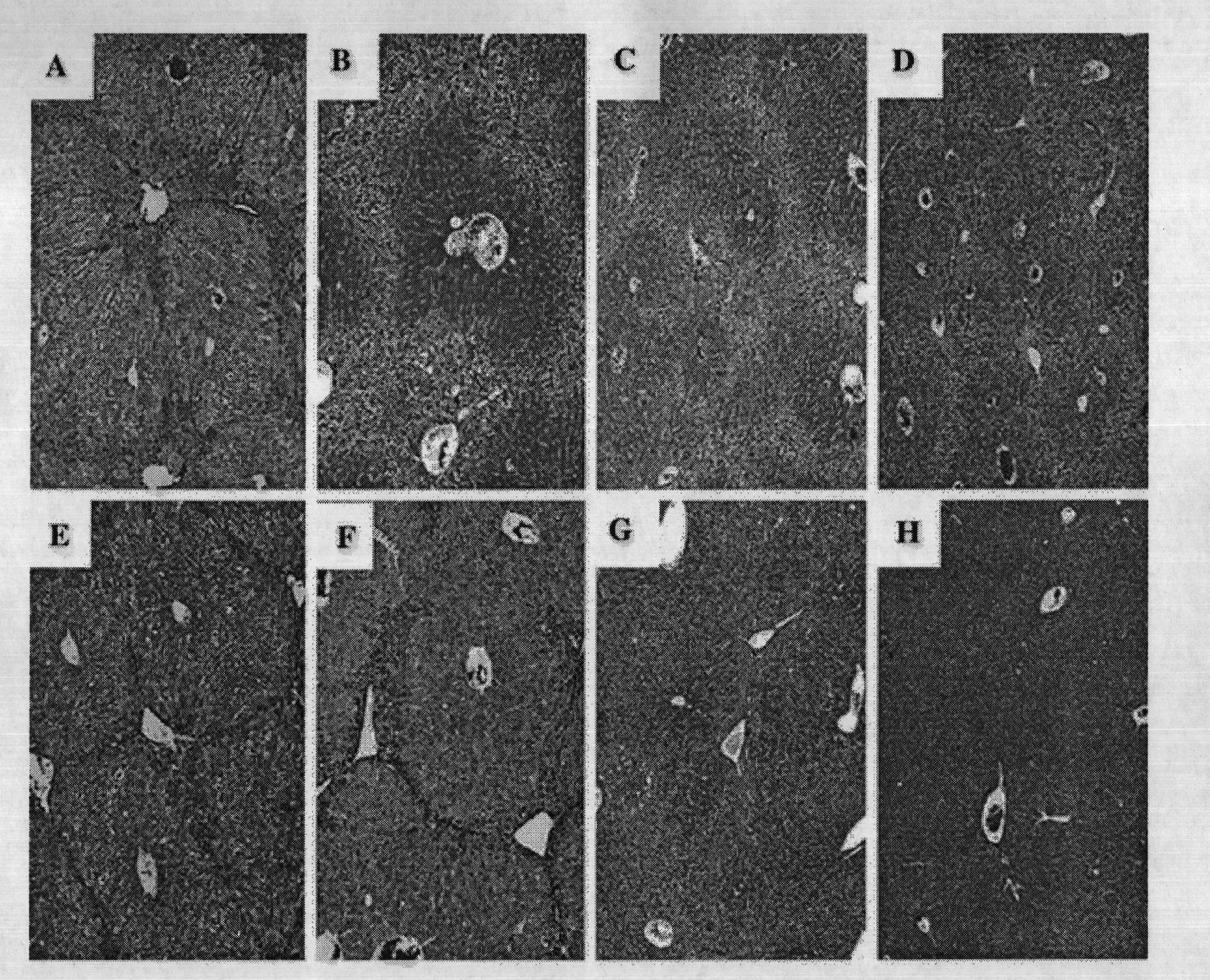Construction method for oriented gene transfer vector in compound type liver
A technology of gene transfer and construction method, which is applied in the field of genetic medicine for liver diseases, can solve the problems of low expression time, low gene transfer efficiency, and poor orientation, and achieve the effects of reducing immunogenicity and improving transgene efficiency and orientation
- Summary
- Abstract
- Description
- Claims
- Application Information
AI Technical Summary
Problems solved by technology
Method used
Image
Examples
Embodiment 1
[0020] Preparation method of nano-microcapsule complex
[0021] 1) Obtaining the target gene
[0022] 1. Acquisition of HGF gene
[0023] 1.1 Total RNA extraction and RT-PCR
[0024] Take out 1 g of pre-retained intact human fetal liver with envelope from the -80°C refrigerator, extract the total RNA step by step according to the method in the RNA extraction kit instructions, and put it in the -20°C refrigerator for later use. Using Primer analysis software to analyze the HGF sequence, design a pair of PCR primers: Primer F: 5`CCGGCTTGCAACATTCTT3`; Primer R: 5`TGCTTCAAATACACTGGCCTCTTCTA3`. Add samples in the following order: 10mmoL / L buffer 1μL, 25mmoL / L magnesium chloride 2μL, 10mmoL / L dNTP1μL, RNase 0.2μL, Rtase0.2μL, Tag0.2μL, primer F 0.4μL, primer R 0.4μL, total RNA 3.6μL, DEPC ddH20 1.0 μL. The combined total volume was 10 μL. Reaction conditions: 94°C for 50 seconds, 54°C for 60 seconds, and 72°C for 90 seconds. 35 rounds of amplification. The extracted liver tis...
Embodiment 2
[0094] In Vivo Experiment of Directed Gene Transfer in the Liver Using Nanocapsules
[0095] Nanocapsules are a new type of non-viral vector, which has the advantages of non-toxicity, non-immunogenicity and relative targeting, and has the ability to bind and condense DNA and efficiently introduce DNA into various cells. No obvious cytotoxicity was shown in vitro. Chitosan can effectively combine with plasmid DNA to form nano-microcapsules, and protect it from the degradation of DNase, which has a certain degree of protection for plasmid DNA. Galactose-modified chitosan can be used as a targeted gene release carrier for liver cells. Galactosylated chitosan (GC) is selected, that is, the molecular structure of chitosan is modified with galactose ligands. The body binds to the specific asialoglycoprotein receptor (ASGP-R) on hepatocytes to play the role of liver-directed gene transfer.
[0096] 1 Materials and methods
[0097] 1.1 Materials
[0098] Plasmid pEGFP-N1 was purch...
Embodiment 3
[0105] Experimental Study on Anti-hepatic Fibrosis of Composite Gene Transfer Vector Encapsulated by Nano-microcapsules
[0106] 1. Establishment of mouse liver fibrosis model:
[0107] Using dimethylnitrosamine (dimethylnitrosamine, DMN) to induce mouse liver fibrosis model, referring to the method of Alakkod (Biochen J, 1987, 244: 75-79), dilute DMN to 0.05 with 0.9% (w / v) NaCl % (v / v) concentration, take 2ml and inject intraperitoneally at a dose of 0.05% DMN / kg rat body weight (10 μL DMN / kg rat body weight), once a day, for 3 consecutive days a week, for 4 weeks in total. Tissues were taken for light microscope and electron microscope observation for histopathological identification.
[0108] 2. Gene transfection:
[0109] AsOR-PL-Nanosphere-pAdV.CMV-HGF and pAdV.CMV-asTGFβ1 and pAdV.CMV-HGF-asTGFβ1 directed metastasis in the liver.
[0110] Inbred rats and mice were selected, randomly grouped into groups using anesthesia, and surgical methods were used to inject AsOR-P...
PUM
 Login to View More
Login to View More Abstract
Description
Claims
Application Information
 Login to View More
Login to View More - R&D
- Intellectual Property
- Life Sciences
- Materials
- Tech Scout
- Unparalleled Data Quality
- Higher Quality Content
- 60% Fewer Hallucinations
Browse by: Latest US Patents, China's latest patents, Technical Efficacy Thesaurus, Application Domain, Technology Topic, Popular Technical Reports.
© 2025 PatSnap. All rights reserved.Legal|Privacy policy|Modern Slavery Act Transparency Statement|Sitemap|About US| Contact US: help@patsnap.com



